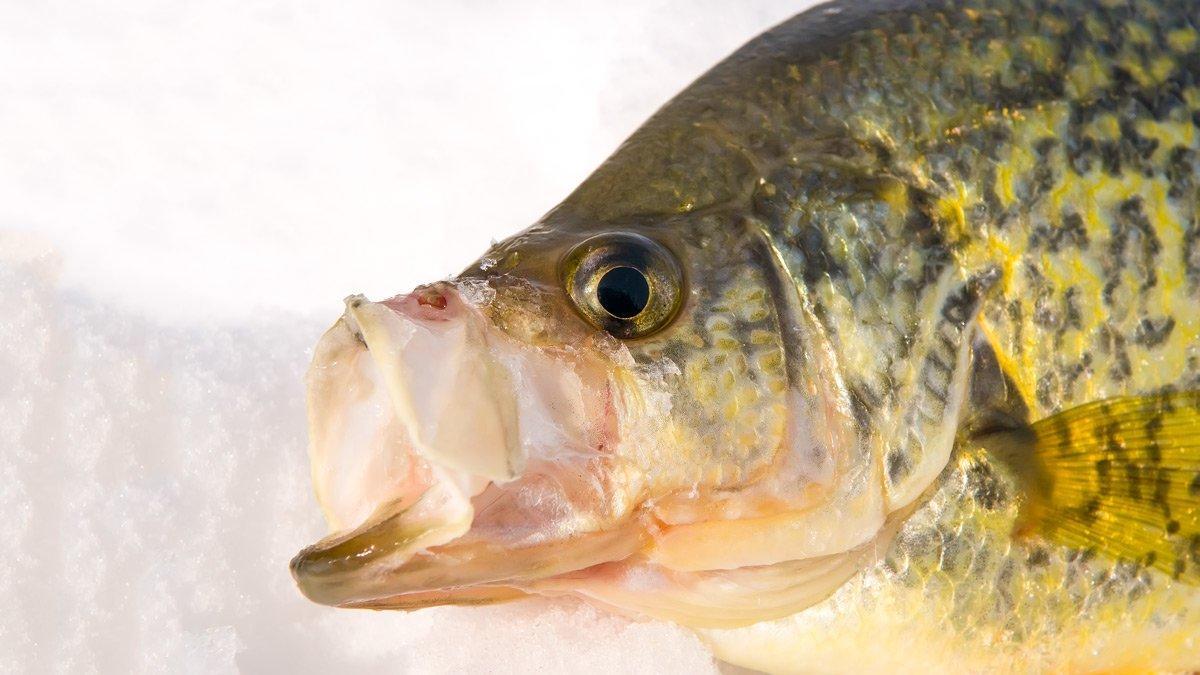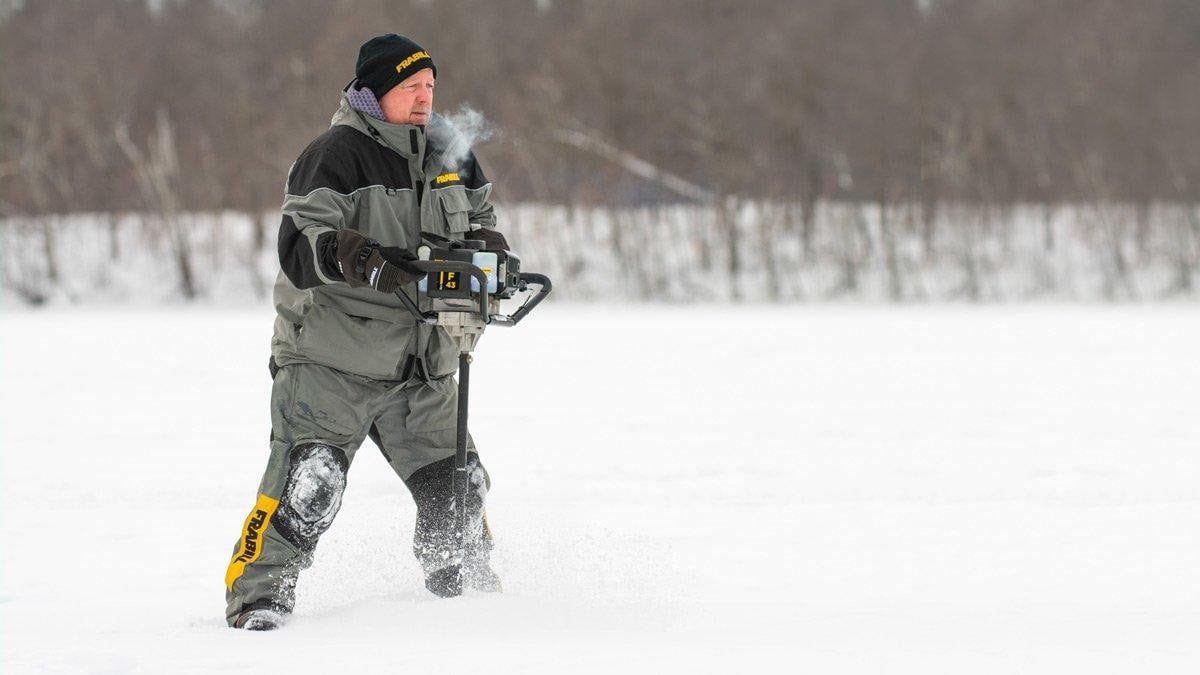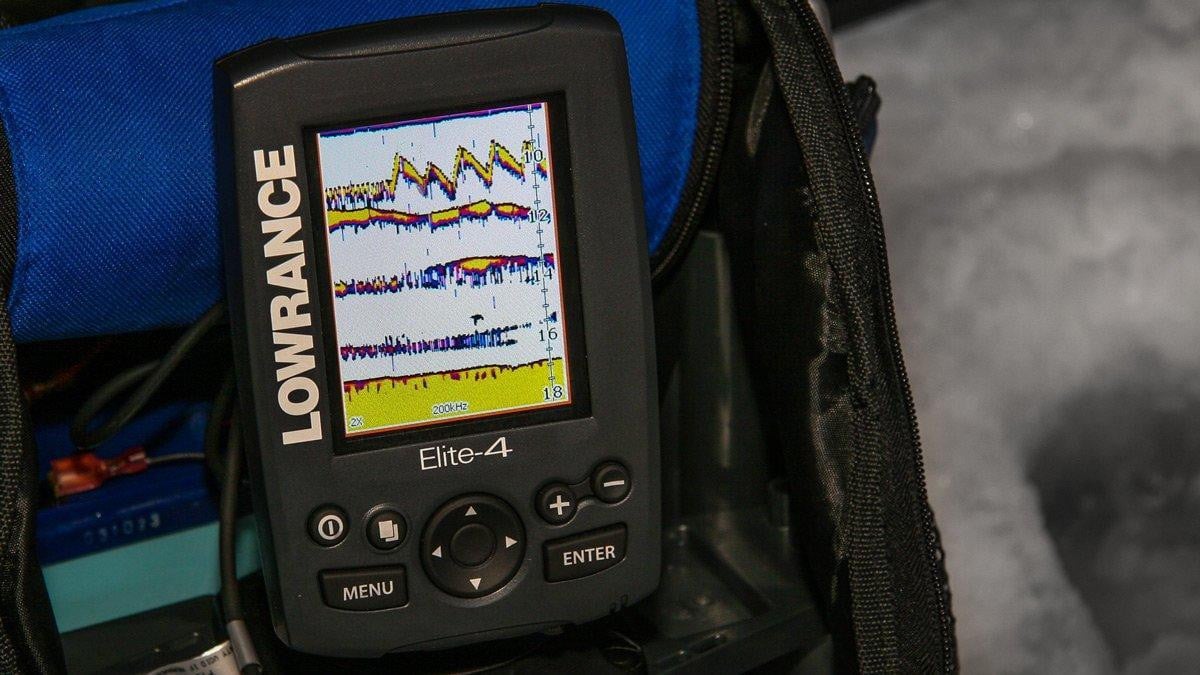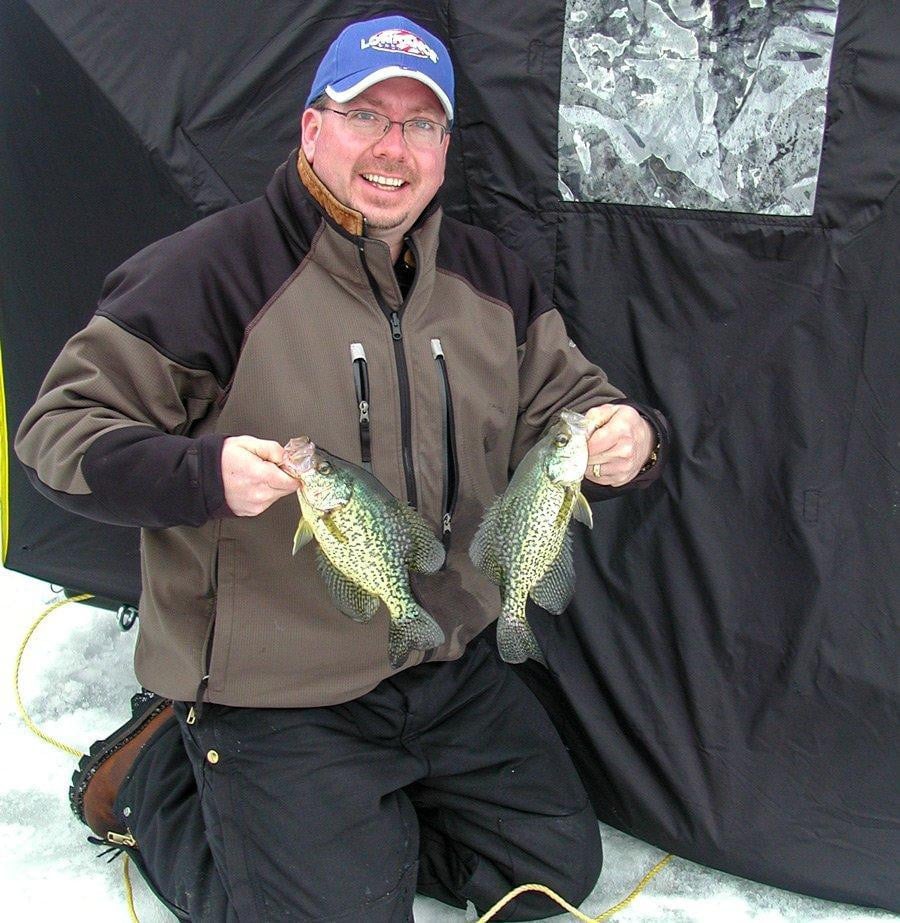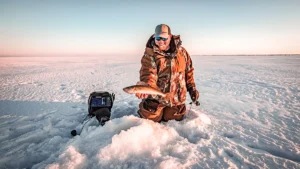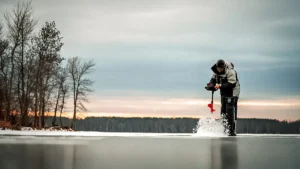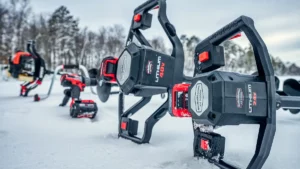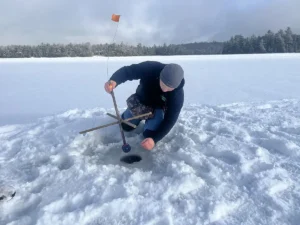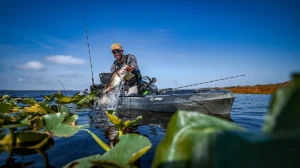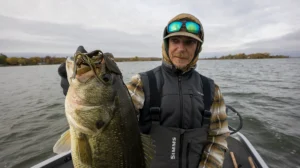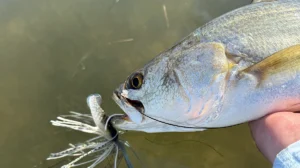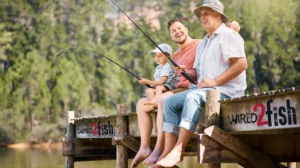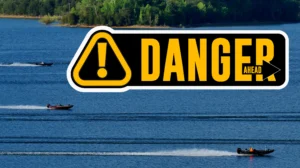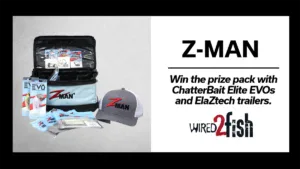Locating and catching daytime crappie from natural lakes in mid-winter can be a tough task. The first-ice bonanza is over. Early season hotspots often turn unproductive. Crappie are frequently fussy during the day.
Multi-species expert and former Professional Walleye Trail pro, Scott Glorvigen of Grand Rapids, Minn., has a reliable method for catching crappie from lake basins in mid-winter. He dangles a tiny ice jig on 1- or 2-pound line to fool crappie filter feeding on microscopic zooplankton suspended over soft-bottom areas.
No bones about it, Glorvigen’s method is full-on finesse fishing. But, it’s a proven approach for catching neutral and inactive crappie during a winter phase renowned for tough bites and elusive fish.
The following are the system’s main components:
- Soft-bottom basins
- Setting-up for success
- Gear for filter-feeders
- Jigging tactics
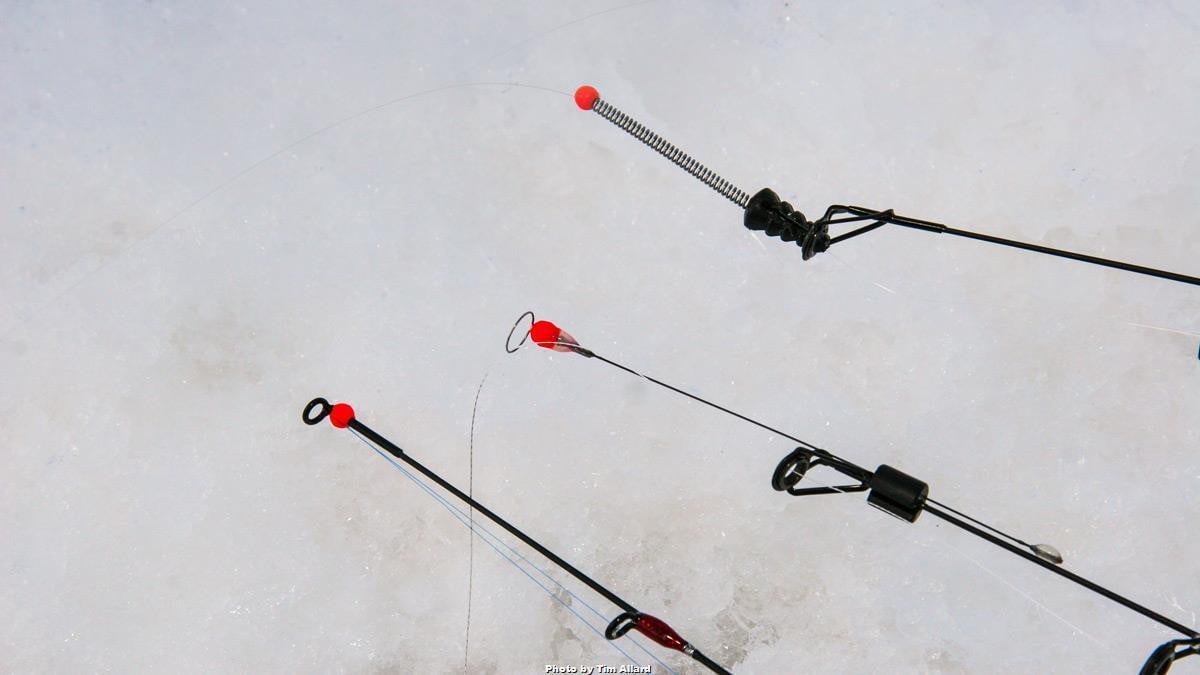
Specific spots in basins
Crappie live in soft-bottom basins in winter on many natural lakes. But, tracking down roaming, suspended fish in these vast areas is tricky work.
To tip the odds in his favor, Glorvigen plans a precise attack. Using digital maps and Lowrance’s Insight Genesis data, he looks for the following:
A sheltered basin – The best basins are somewhat contained and surrounded by shallow water. These areas produce plenty of sediment and silt. The deposits collect on the basin floor, providing habitat for zooplankton and other invertebrates crappie eat.
A wall – Locate a wall or a steep contour along the basin’s perimeter. Sediment and silt slide down a sharp edge better than a slow-tapering drop. As such, the base of a steep slope collects large amounts of sediment and holds more forage for crappie.
Bends – Look for an an inside turn along the wall. The contour variation collects crappie and delays their basin-wandering behavior.
Depth – Glorvigen finds 20 to 32 feet is the most productive depth range. There are always exceptions, but generally this depth window provides optimal water temperature and sunlight penetration, which impacts zooplankton movements.
Eating spots – “As crappie filter feed they move around,” Glorvigen said. “They don’t run bait like walleye, but as a big group they can move zooplankton against these walls and inside turns and feed on it.”
Setting up for success
Glorvigen drills out an area and locates fish using sonar before settling into a portable shelter. The refuge is a necessity for finesse tactics on cold windy outings. Mild days encourage more mobile tactics and exploration.
Generally though, mid-winter weather is cold and gusty. In these conditions, a reliable strategy is patiently waiting for crappie to make another lap around the basin and swim through the productive area.
Hole placement – Evenly space holes to follow the basin’s contour. Start shallow. End with the final hole over the deepest water of the basin. This provides a wide swath to explore for roaming crappie.
Mark fish first – Use sonar to check holes for fish, moving shallow to deep. An Aqua-Vu underwater camera confirms sonar marks are slabs. Set up the shack once crappie are found.
Dig in – Shovel snow onto a shelter’s tent fabric skirt to block wind from entering the shelter. This prevents it from blowing light line, which can cause an angler to miss bites. It also makes fishing more comfortable.
Fine-tune sonar – “I’m a huge believer in broadband sonar because you can see zooplankton on it,” Glorvigen said. “When you’re dealing with a totally finesse driven bite, no matter the electronics you’re using, you need to fine-tune it as much as possible. Sensitivity, color line, adjusting the viewing window to see more, these things will help you. Don’t just turn it on and ‘set it and forget it’. Refine it as best you can. Little details are what make a big difference in this situation.”
Matching gear for filter feeders
Anglers who pay attention to details catch more zoo-eating slabs. Comfort with downsized finesse tactics is an important skill.
“Crappie are barely opening their mouth to suck-in zooplankton so it goes in their gullet, and not out their gills,” Glorvigen said. “Over aggressive jigging or using something too big won’t work.”
Horizontal jigs – A 1/32- to 1/64-ounce horizontal jig does a better job of sliding into the narrow gap of a crappie’s mouth than a vertical jig. Glorvigen uses a Northland Fishing Tackle Gill Getter. The Lindy Fat Boys or VMC Larvae Jig are other options.
Colors – White and glow patterns, including chartreuse, are good starters. Dark colors, such as purple or black, can sometimes trick conditioned crappie to bite.
Add meat – Glorvigen tips a jig with one plain, or white, spike to emulate translucent zooplankton. Two maggots, one white and one red, are used for aggressive crappie. Waxies get the nod when a bigger presentation appeals to slabs.
Light line – The thinner the line, the easier a crappie can suck in the jig. Sufix or Berkley monofilament of 1- or 2-pound is better than 4-pound, for instance.
Soft touch – Monofilament’s stretch cushions the fight and helps keep crappie hooked. Glorvigen also back-reels to prevent line breakage.
Light-bite strike indicator – Glorvigen uses a rod featuring strike indicator at the end, such as the adjustable Frabill Titanium Spring Bobber. When a crappie takes a jig, it releases the tension from the line and the bobber straightens, signaling it’s time to set the hook. Frabill’s Quick Tip rods are also used. The ultra-sensitive end also provides a visual cue of a strike.
Ditch twist – Line twist causes a jig to spin when paused, ruining the presentation. A micro swivel 18 inches above the jig prevents twist. Otherwise, let a jig dangle and spin-out twist as needed when fish aren’t around. Another option is using a straight line reel, which doesn’t twist line like a spinning reel.
Jigging tactics
Replicating microscopic forage is a delicate task. Keep action subtle to dupe zooplankton-eating slabs.
“Zooplankton doesn’t swim around like shiner minnow,” Glorvigen said. “It just pulsates and barely moves around in water column, because of the nature of what it is. Typically the best technique is dead-sticking a jig by setting it on your knee. Another option is a slow rise and drop, [with long pauses].”
Aggressively shaking and snapping the jig attracts crappie from a distance, but switch to finesse tactics once the sonar displays fish.
Glorvigen presents a reliable way to find mid-winter crappie and fool them with finesse tactics. Do this and you’ll catch plenty of slabs during winter’s doldrums.
Quick tips
|
